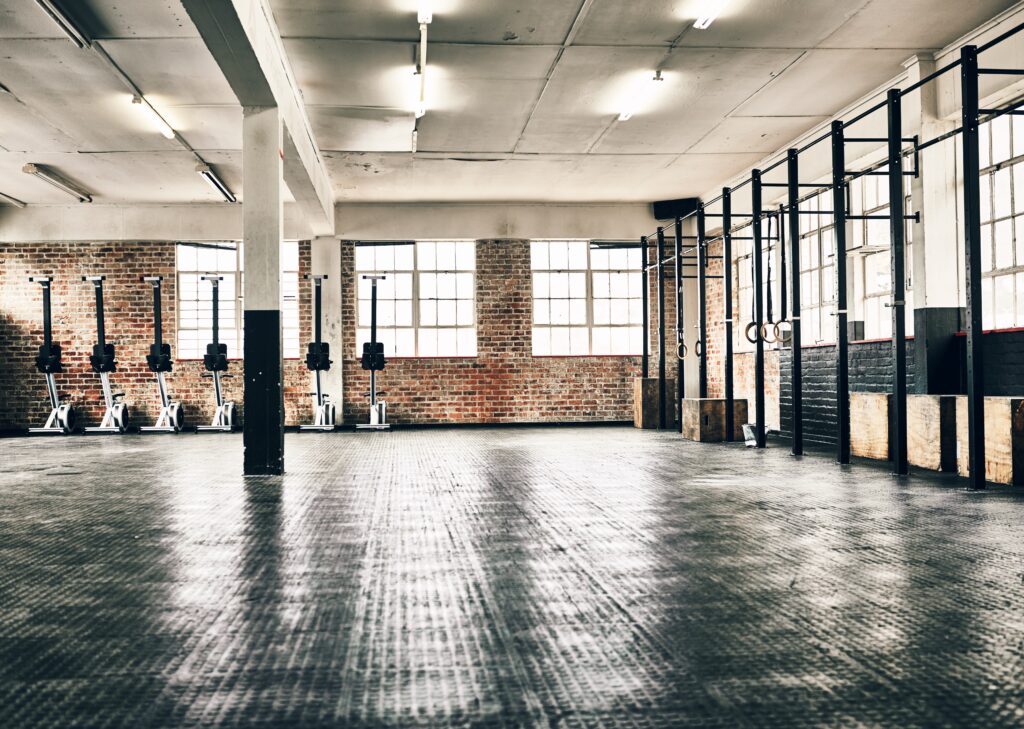As a fitness business owner, you’re passionate about helping others achieve their fitness goals—but are you fully protected from risks that could jeopardize your business?
Gym insurance is an essential part of running a fitness business, safeguarding you from unexpected events that could otherwise lead to serious setbacks, or even business closure. Everything from natural disasters to member injuries can seriously hinder your business, so it’s important to make sure you have yourself covered. In this article, we’ll break down what gym insurance is, why it’s important, and how to select the right coverage to protect your gym.
- Gym insurance protects your business from risks like client injuries, equipment damage, and lawsuits.
- Common coverage includes:
- General liability (accidents and injuries)
- Property insurance (equipment and building protection)
- Professional liability (claims related to negligence)
- Workers’ compensation (coverage for staff injuries)
- Choose insurance based on your gym’s size, services, and specific risks.
- Steps to find the right coverage:
- Assess your needs
- Consult with an expert
- Compare policies from different providers
- ABC Glofox can help streamline your gym operations, manage waivers, and simplify risk management for insurance claims and compliance.
What is Gym Insurance?

Gym insurance is a specialized form of business insurance that covers the unique risks associated with operating a fitness facility. Whether you own a small personal training studio or a large gym with multiple locations, gym insurance provides coverage that can protect your business from a variety of risks, including client injuries, equipment damage, and lawsuits. In many countries, it is a legal requirement for you to have some form of insurance for your gym, so it’s important that you’re in the know on the right insurance for your business.
Gym insurance typically comes as a package that includes multiple types of coverage tailored to the needs of fitness businesses. Here are the main types:
- General liability insurance: Covers claims of bodily injury or property damage caused by your business operations. For instance, if a client slips on a wet floor and injures themselves, general liability insurance would cover the medical costs and any legal fees if they decide to sue. This also covers injuries that come from using equipment, attending classes, and other incidents that happen on your premises.
- Property insurance: Protects your business’s physical assets, including gym equipment, the building itself, and any other property from damage caused by fire, theft, or natural disasters. For example, if a storm damages your roof or floods your facility, property insurance helps cover the repair costs.
- Workers’ compensation: If you employ staff, this insurance covers injuries or illnesses that your employees may suffer while working. Whether it’s a personal trainer spraining their ankle during a class or a receptionist developing repetitive strain injury, workers’ compensation helps cover medical expenses and wage replacement.
- Professional liability insurance: Also known as errors and omissions (E&O) insurance, this protects your business from claims related to negligence, poor instruction, or advice that leads to injury. For instance, if a client claims that an exercise your trainer recommended caused them injury, this insurance would cover legal fees and settlements.
Free Fitness Business Plan Template
Discover moreWhy Gym Insurance is Critical for Your Business
Running a gym involves more risks than you might think. Without the right insurance in place, you could be vulnerable to lawsuits, costly repairs, and other financial challenges that could quickly cripple your business. Here are a few reasons why gym insurance is critical:
1. Risk Mitigation
Accidents happen, even in the safest environments. Gyms, in particular, are high-risk environments where injuries can occur, whether it’s a client dropping weights, tripping over equipment, or having a medical emergency during a workout. Gym insurance helps mitigate the financial impact of these accidents, covering medical expenses and legal fees, so your business isn’t left struggling.
2. Legal Requirements
In many countries and regions, certain types of insurance are legally required for businesses, including gyms. For example, workers’ compensation is mandatory in most areas if you have employees, while public liability insurance may be required before you even open your doors to the public. Without these essential policies, you could face fines, lawsuits, or even the closure of your business.
3. Client Confidence
Having proper insurance in place can increase trust in your business. Clients want to know that if they get injured while working out, you’re covered and they’ll be taken care of. Promoting your insured status can boost client confidence, assuring them that they’re in safe hands. This is especially helpful for personal trainers, yoga teachers, and other instructors.
Free Fitness Business Plan Template
Discover moreCommon Risks for Gym Owners

Gym insurance isn’t just about ticking a box—it’s about protecting your business from the specific risks that come with operating a fitness facility. In many cases, it pays to be proactive and mitigate any risks that are related to your business.
1. Injuries
Injuries are the most common risk in any gym setting. From sprained ankles to more serious injuries like torn ligaments or heart attacks, gyms can be hazardous environments. Even with the best safety precautions in place, accidents can happen. Insurance helps cover the medical costs, legal fees, and potential settlements that arise when clients or staff get injured.
2. Equipment Damage
Gym equipment is expensive to purchase and maintain. Whether it’s due to wear and tear, improper use, or even theft, equipment damage can quickly add up. Property insurance ensures that if something breaks or is stolen, you can repair or replace it without significant financial strain.
Not sure how to manage your gym equipment effectively?
3. Natural Disasters
No business is immune to natural disasters. Floods, fires, and storms can cause extensive damage to your facility. Property insurance not only covers the cost of repairs but can also provide financial support if your business is forced to close temporarily.
4. Legal Claims
In today’s litigious society, it’s not uncommon for businesses to be sued. Whether it’s a client suing for an injury or a staff member claiming unsafe working conditions, legal claims can be financially devastating. Liability insurance ensures that you have legal defense and settlement funds at your disposal if you’re taken to court.
How to Choose the Right Insurance for Your Gym
Not all gyms are the same, and neither are their insurance needs. The type and amount of insurance you need will depend on factors such as your gym’s size, the number of clients you serve, and the services you offer. Here are a few steps to help you choose the right coverage for your gym:
1. Assess Your Risks
The first step in choosing the right gym insurance is to assess the risks unique to your business. If you run a large gym with a lot of members, you may need more extensive liability coverage. If you offer specialized classes or personal training, you may need additional professional liability insurance. For example, if you’re a yoga teacher, you need specific insurance to cover you in case of injury or accident. Consider factors like your equipment, the number of staff you employ, and the types of clients you serve.
2. Consult with an Expert
Insurance can be complex, especially when it comes to business-specific policies like gym insurance. It’s a good idea to consult with an insurance broker or expert who specializes in fitness business insurance. They can help you evaluate your needs, identify gaps in coverage, and recommend the right policies to protect your business.
3. Compare Policies
Once you know what kind of coverage you need, it’s important to shop around and compare policies from different providers. Look for policies that provide comprehensive coverage at a reasonable price, and be sure to read the fine print to understand what is and isn’t covered.
4. Consider Your Budget
While insurance is an essential expense, it’s important to factor it into your overall budget. The cost of your premiums will depend on the size of your gym, the types of coverage you choose, and the level of risk your business presents. Be sure to include insurance as part of your operational costs so that you’re not caught off guard by unexpected expenses.
How ABC Glofox Can Help You

Managing a gym involves much more than just teaching classes and maintaining equipment—you also need to stay on top of legal requirements, client safety, and risk management. That’s where ABC Glofox comes in. Our fitness management platform is designed to help gym owners streamline their operations and manage risk more effectively.
1. Simplify Risk Management with ABC Glofox
With ABC Glofox, you can easily keep track of member activity, manage waivers, and ensure compliance with online agreements. By maintaining accurate records and tracking client interactions, you’ll be better prepared in case of an insurance claim.
2. Monitor Waivers and Liability Forms
ABC Glofox’s platform allows you to collect and store client agreements digitally, reducing your liability in the event of an accident. This can be crucial for defending your business against lawsuits and ensuring that clients understand the risks involved in using your facility.
Remember, gym insurance is not just a legal requirement; it’s the law. By understanding the different types of coverage available and choosing the right policies, you can ensure that your gym is fully protected, allowing you to focus on helping your clients reach their fitness goals.
Ready to simplify your gym operations and make managing your members easier? Book a demo with ABC Glofox today and discover how we can support your business.



![[ABC-Glofox]-best booking software system](https://www.glofox.com/wp-content/uploads/2025/04/ABC-Glofox-best-booking-software-system-400x266.jpg)









